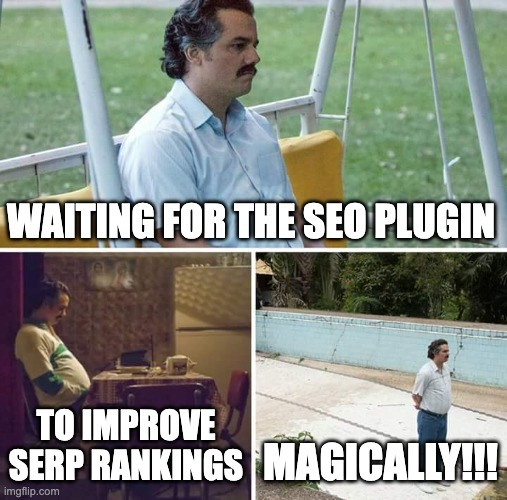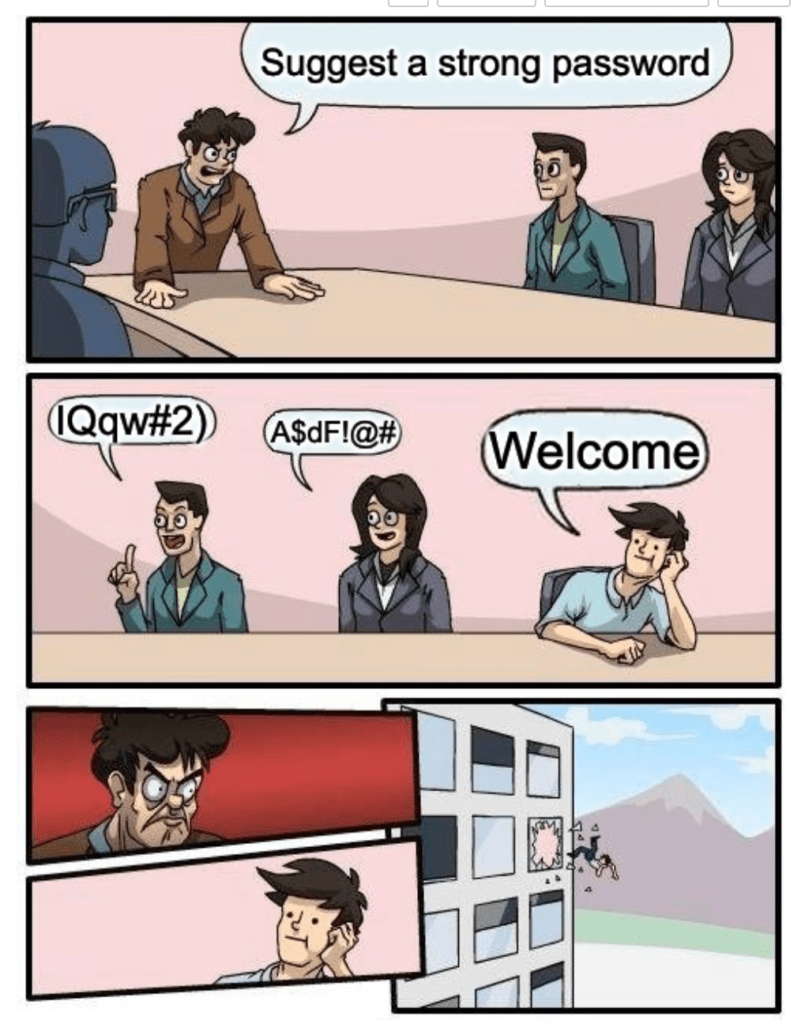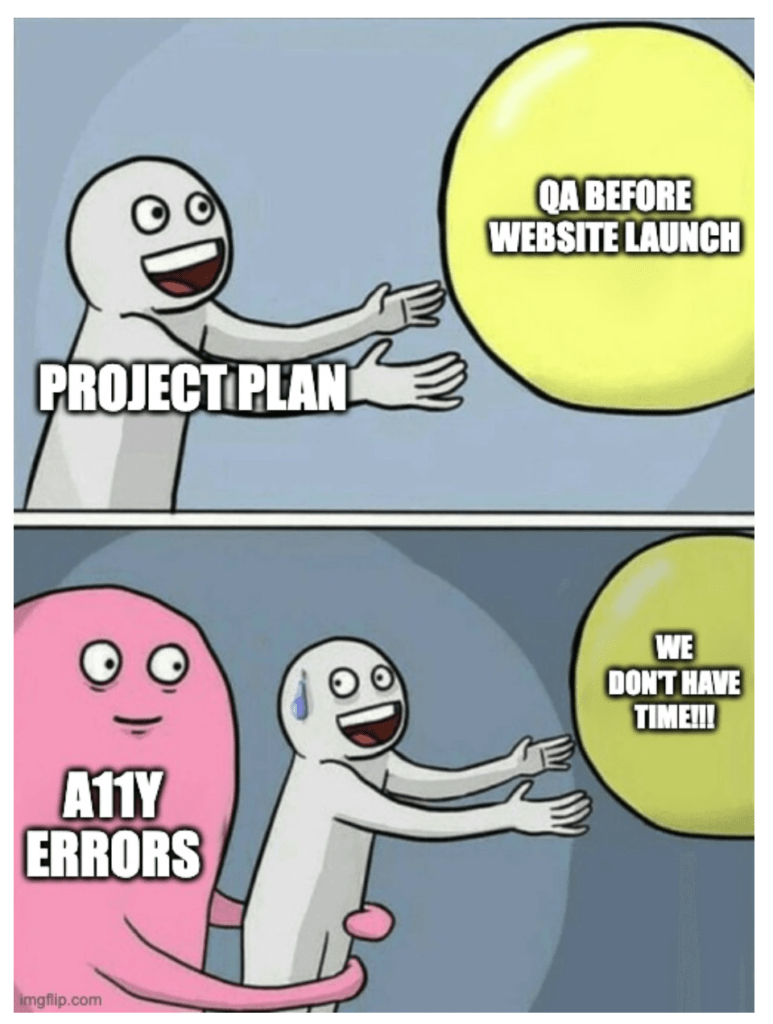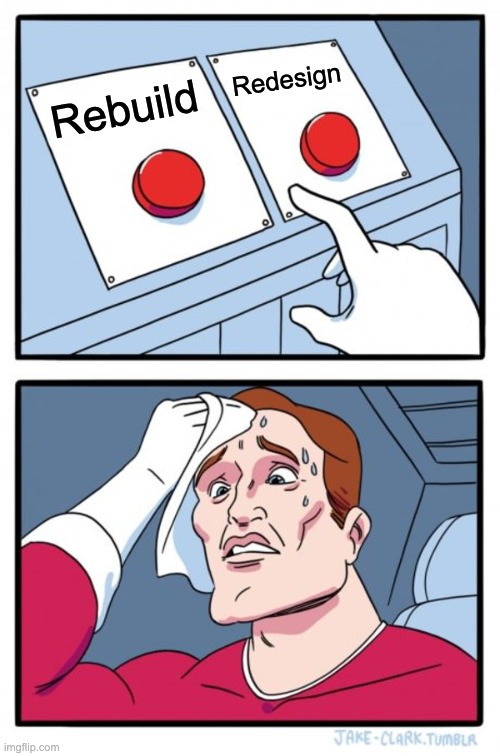Every business is different. So are websites. The client and the website development agency should be on the same page to build, redesign, or migrate data successfully.
Educating a client is rewarding, and fun. At WebDevStudios, we take the time to walk clients through our processes and their new website, never abandoning them after launch.
Here are five things all WordPress website owners should understand. Comprehension of these concepts makes it easier for the discovery and strategy process of their website project.
1. Process vs Plugin
When you install a plugin that has the features you need, it is a small part of the process. Let me explain further with some examples.
SEO is a process, not a plugin.
One thing WordPress website owners should understand and accept now is that SEO plugins cannot magically improve your search engine rankings and get you more traffic by themselves.

Let’s take a look at the SEO process:
SEO Audit
This step includes auditing the whole website and content. Without this step, website owners cannot understand how to find and fix technical errors or flaws in the content strategy.
Technical SEO
Checking, creating, or fixing the following is a part of technical SEO: sitemaps, faster load times, internal links, 301 redirects, broken links, indexing status, and crawl errors.
Keyword Research
This is a significant step in SEO. Research the costs for keyword research software and services, and you can see this step is an industry itself.
Know your audience, then you can find what they are looking for online. The general rule is to choose long-tail keywords with high search volume and low competition ratio. But you can also choose competitive keywords and their related keywords.
If your competitors have long-form articles and rank high for a keyword, you can create videos. This gives you the edge over them.
Content Strategy
Once you have keywords, you should come up with a clear content strategy. This helps you create content related to each topic and is also valuable to your website’s visitors.
WordPress website owners should understand that there are many critical factors involved in SEO. You can’t predict the search engine algorithms, but you can control the quality and relevancy of your content and user experience.
There are a few popular SEO plugins out there, well documented and maintained. You might be using one of them, but SEO doesn’t stop there.
If you are not sure about which plugin to use, our UX designer Jennifer Cooley’s comparison of the top SEO plugins should be helpful.
Security is a process, not a plugin.
A security plugin or combination of plugins can let you set up a Web Application Firewall, IP-based restriction, etc. However, a security plugin alone can’t stop cybersecurity attacks.
Your hosting provider plays a crucial role in keeping the environment safe. You should keep the plugins and themes and core WordPress version updated.
Google / Harris Poll 2019 found that 24% of Americans used common passwords or some variation like Password, abc123, iloveyou, Welcome, etc.

WordPress introduced a password strength indicator in 2013, to encourage the use of strong passwords. But many users go with predictable passwords, even today.
Use two-factor authentication to add another layer of security to your website. DDoS, butte force and XSS attacks could be prevented with a combination of SSL, CDN, and following The Open Web Application Security Project’s best practices.
Security plugins play a part in the security process. You can keep your site secure with a combination of plugins, server configuration, and automated backups. For better understanding, watch this WordCamp London 2108 talk by Thomas Vitale.
Accessibility is a process, not a plugin.
Accessibility should be included in the development process. All WordPress website owners should understand that each component of the website should be accessible.
Allow your website development partner to take time and implement accessibility and audit the website in each sprint. Many website owners assume that installing an accessibility plugin at the last minute is good enough, which is not true!

2. Performance Scores vs User Experience
A performance optimization plugin is not the magic pill for performance issues. A popular myth among website owners is that a good performance score alone can bring more traffic.
The main idea behind core web vitals (CVW) is to offer a good user experience. You should not just rely on the CVW scores. Delight your website visitors with relevant content, clear navigation, faster load times, and follow best practices.
The content has to be relevant and worth reading and sharing with others, if not users might bounce off the page. This in turn increases the bounce rate which signals search engines that the content is not the best for the search query.
For further reading on CVW, dive into this piece from the Search Engine Journal.
3. Rebuild vs Redesign
Every website deserves a fresh look. No one likes the outdated design. This brings up the question, does your website needs a redesign or a rebuild?

Redesign refers to changing the look and feel of the website, and retaining the same content and features. Rebuild means you are changing the website structure, adding or removing features, and even migrating content from one website to another.
- When you change your brand’s colors or messaging, a redesign can help.
- If you want to introduce new features like memberships, shopping carts, etc., you need to rebuild the website.
Further reading: Dev Shortie: Rules For Your Redesign
4. You need to test before you update.
Updating plugins and themes and also core WordPress is always recommended. However, every major update needs to be tested on a development or staging site before going to the live site.
If you know that certain plugins are customized, then it is a must to test the new version before updating it to the live site. Take a look at the change log and see what has changed between the new version and the current version that your site has.
Fields, HTML markup, CSS class names other new features, or bug fixes might be introduced in the new version. Often newer versions require a database update too.
So you have to have a complete backup of files and database before the plugin, theme, or core updates go into the live site. If something goes wrong you can restore the backup.
Do you need auto-updates?
Since WordPress 3.7, you can allow automatic updates for maintenance and security releases. While this is good and saves time, it is not recommended for websites with a lot of customization. In most cases you will not get any critical errors or conflicts, so test it on a development environment, then update the live site.
Further reading: How to Test New WordPress Releases to Avoid Problems
5. Choosing the right approach for you.
When we say competition, we compare our products and services with the competitors on the market. It is common and unavoidable to compare, but you don’t have to go with the same tech stack that your competitors are using.
Choose the right plugins, themes, hosting, and other stack related to your website based on what works for you. Discuss with the web design agency and discover the available options. This will help you narrow down and decide well.
Don’t go with the trend just because someone is using it. Every website is unique in its own way. WebDevStudios is committed to delivering the best services to every client, as our mission statement goes, “Your success is our mission.”
Have an enterprise project in mind? Let us build and launch it together, contact us now!
Thanks for giving this wonderful article.